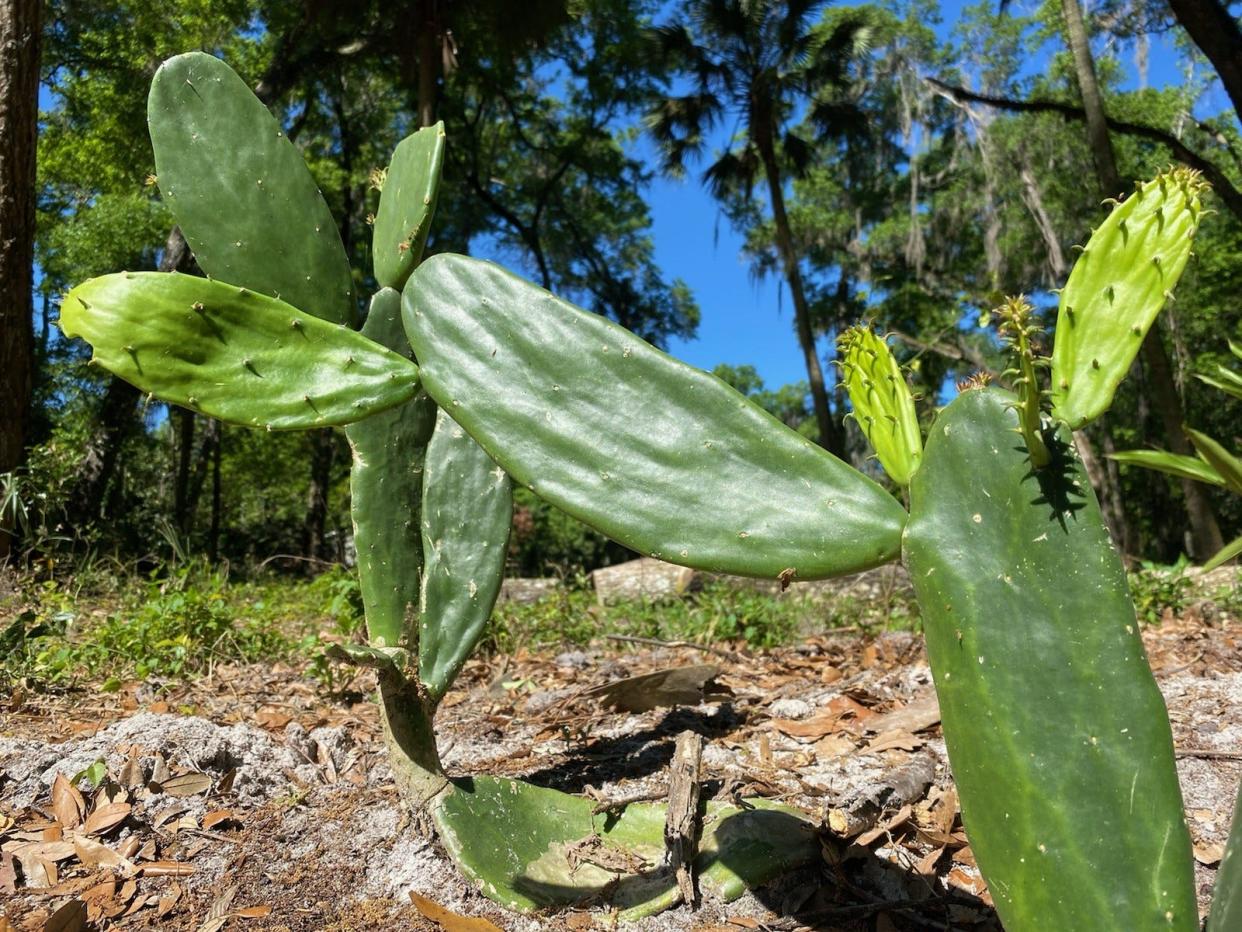Mark Bailey: Food from succulents

Hot sun and dry, sandy soil are conditions where most plants will wither and die, yet this is where succulents thrive. Succulents may not be the go-to plants for most gardeners when it comes to food production; however, there are some excellent options available. It is not uncommon for long periods without rain in North Central Florida throughout the spring, and it makes growing most food crops a challenge without irrigation. Cacti and other succulents are perennial and, once established, need little or no attention. Also, they can grow in sandy, sunny spots that otherwise may have gone unplanted.
Succulents are easy to grow and even easier to propagate. Vegetative propagation for most succulents is a very simple process. A pad or segment of the plant can be cut off, and the wound will form a callus after a few days. Plant into well-drained soil in a sunny location and lightly water intermittently to encourage root growth. Excessive water is one of the greatest threats to cacti health, so well-drained soil is essential. Once they are established, succulents should not need regular irrigation and can grow well from rainfall.
Perhaps the most common and well-known cactus plant in Florida is the prickly pear (Opuntia ficus-indica). They grow best in a range of well-drained, sandy soils, and need modest fertilizer to maximize growth. Low-nitrogen fertilizer with higher potassium will encourage more fruit production. Wild prickly pear is usually covered in large spines, and these are not ideal for food purposes. Fortunately, there are varieties of prickly pear that are free of the large spines; however, some may have very tiny clusters of needle-like spines that grow all over the plant. These are called glochids and will need to be carefully removed before consuming.
Kitchen tongs can be used when harvesting and preparing prickly pears for cooking. Younger pads, which are lighter green than older pads, are best for food purposes. If they do have any spines, they can be removed by peeling the pads with a potato peeler or individually cut out. Wash the pads to remove any dirt or small spines stuck to the plant. Young pads can be eaten raw or sautéed. The flavor is mild and pleasant. Prickly pear also produces edible fruit that will begin as an attractive yellow flower on the ends of the pads. Fruit grows on mature cacti, so this may take a few years before they begin to produce fruit. The fruit will ripen into an oval fruit 2 to 3 inches long with a flat end. The fruit will turn a dark red or red-purple once ripe. Like the pads, the fruit may need to have glochids removed before consuming, or they can be peeled. The fruit is juicy, sweet and mild.
Dragon Fruit (Selenicereus spp.) is part of the cactus family, and they produce bright pink or yellow edible fruit filled with white or pink flesh that is peppered with tiny, black seeds. Dragon fruit have elongated stems and will need to be grown on a trellis or similar structure. They grow best in conditions very similar to the prickly pear cactus; however, this cactus is very cold-sensitive and will need to be protected in freezing conditions. Dragon fruit are not native to Florida, so they may be susceptible to pests or diseases that the prickly pear is naturally resistant to. Nonetheless, dragon fruit produces delicious and visually dazzling fruit that is worth the effort.
Purslane (Portulaca oleracea) is not a cactus, though it is a succulent. Purslane comes in different varieties and can be commonly found growing in the wild. They thrive in a wide range of conditions, but will grow best in conditions similar to that of cacti. The thick, small leaves of purslane are edible and can be eaten raw. They have a salty, tart flavor with a somewhat slimy, though not unpleasant, texture. Purslane has high oxalic acid content, so it’s best to consume it in moderation.
Aloe (Aloe spp.) contains hundreds of species, and they are all amenable to conditions in which cacti thrive. The only notable difference is that some aloes grow better in moderate sunlight rather than in full sun. Aloes have slight food qualities, though they do have medicinal properties that have been used for many thousands of years.
In addition to succulents, there are many drought-tolerant food plants worth considering. Some of these plants include chaya, jelly palm, lemon grass, loquats, okra, rosemary, longevity spinach, Malabar spinach, Surinam spinach, paw paws, pineapple, pineapple guava, saw palmetto and yaupon holly.
Succulents are tough plants that can fill niches that most other plants cannot thrive in, and some can reliably produce delicious food with little effort.
For more information, call the Marion County Extension office at 671-8400 or email ironhill@ufl.edu.
— Mark Bailey is the Sustainable Agriculture and Food Systems Extension Agent for UF/IFAS Extension Marion County. For more information, contact the Marion County office at 671-8400. The Extension Service is located at 2232 NE Jacksonville Road, Ocala, FL 34470.
This article originally appeared on The Gainesville Sun: Mark Bailey: Food from succulents

